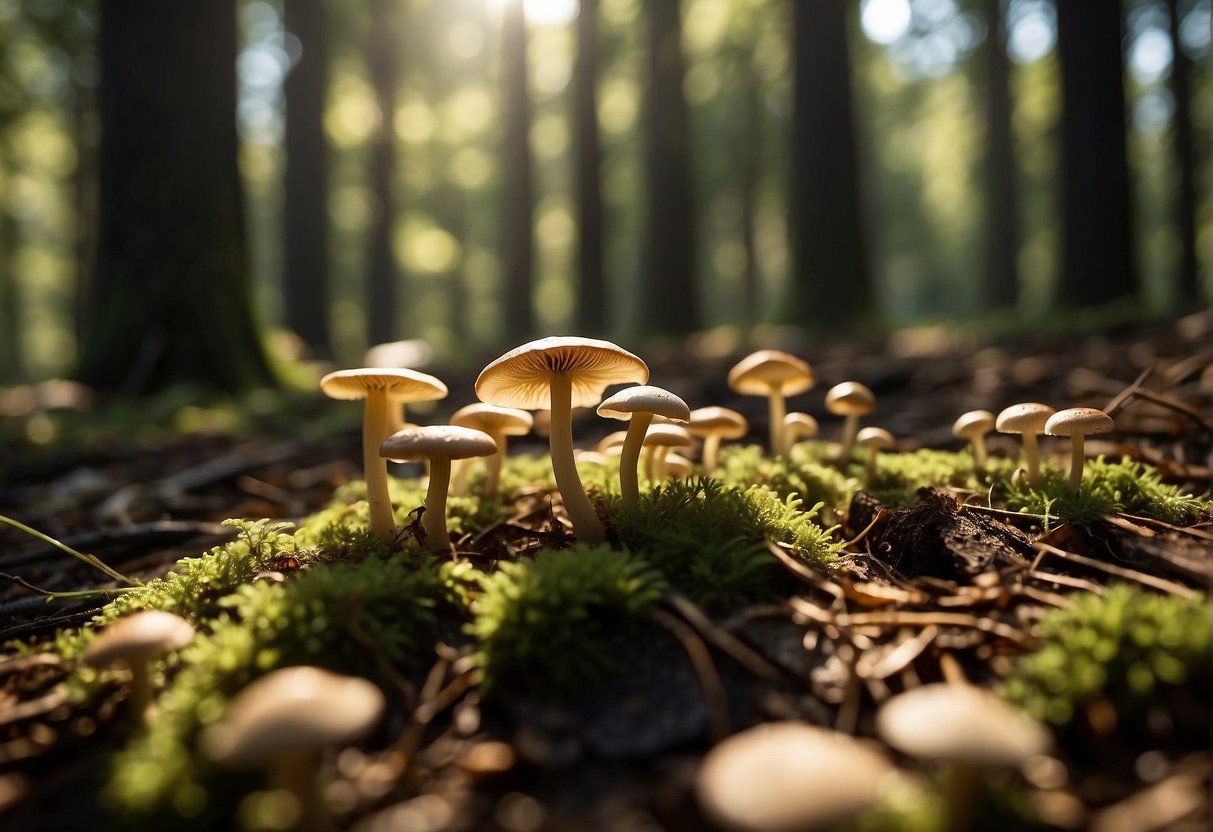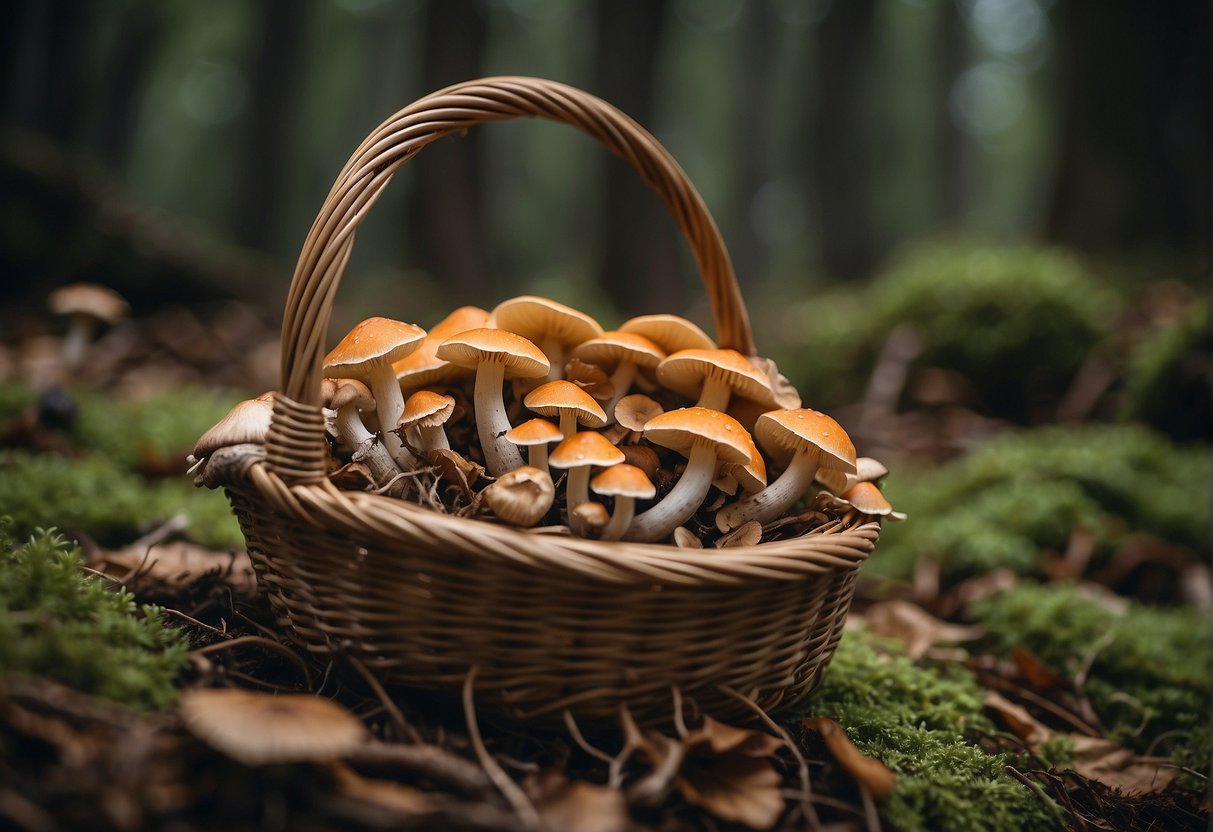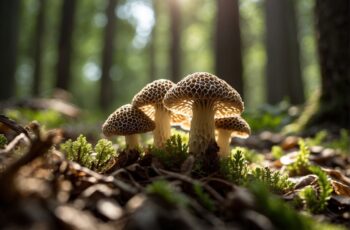Mushroom hunting in Pennsylvania is an engaging pursuit that connects you with the rich tapestry of nature the state has to offer. With its diverse ecosystems ranging from misty forests to tranquil meadows, Pennsylvania is a haven for various fungi species, each with its own unique flavor and texture. As you venture into the world of mushroom foraging, you immerse yourself in an ancient tradition that enhances your connection to the environment and deepens your understanding of local flora.

Your foray into the woods is not just an exciting scavenger hunt but also an opportunity to learn about sustainable harvesting practices and mushroom identification. Pennsylvania’s wooded areas, especially spots like Michaux State Forest, are treasure troves of edible species, including the prized morel mushrooms, flavorful chanterelles, and the robust hen-of-the-woods. With the right knowledge and preparation, mushroom hunting can be a safe and rewarding outdoor activity.
However, it is crucial to approach mushroom foraging with caution and respect for the ecosystem. Ensuring you have accurate identification and an understanding of the growth conditions necessary for each type of mushroom is vital to a successful harvest. Join online resources and groups that focus on mushroom hunting in Pennsylvania to enhance your skills and find companionship in fellow enthusiasts eager to explore and appreciate the lush Pennsylvania landscapes.
Getting Started with Mushroom Hunting
Embarking on the journey of mushroom hunting in Pennsylvania is an exciting venture that connects you with nature and could reward you with delicious finds. Grasping the fundamentals, gearing up appropriately, and understanding foraging safety and ethics are pivotal to your success.
Understanding the Basics
Before you set off into the wilderness, familiarizing yourself with the basics of mushroom identification is essential. Study local mushroom species to learn which are edible mushrooms and which to avoid, as many look-alike species can be toxic. Books and online resources are invaluable, but consider joining local groups such as the Eastern Penn Mushroomers for hands-on learning.
Essential Gear for Foragers
To properly hunt for mushrooms, you’ll need a few key items:
- A basket or mesh bag: Allows for spores to disperse as you carry your finds.
- A small shovel or knife: Helps with gently uprooting mushrooms.
- GPS or a map and compass: Essential for navigation.
- Field guide: A portable book for identifying mushrooms in the wild.
It’s also wise to dress in layers and wear sturdy shoes as you traverse through different terrains.
Foraging Safety and Ethics
Your safety and the ethics of foraging go hand in hand. Always let someone know where you’re going and never consume a mushroom unless you’re 100% confident in its identification. Respect the environment by foraging sustainably; only take what you need. The Pennsylvania Mushroom Guide reminds us to harvest in a way that allows mushrooms to continue to flourish season after season. Remember, it’s illegal to sell mushrooms you find in state parks and forests in PA without proper licensing.
As you tread through Pennsylvania’s forests in search of mushroom treasure, maintain the curiosity of a forager and the reverence of a naturalist. Your adventures in mushroom hunting will be as rich in experiences as they are in potential culinary delights.
Prime Locations and Seasons

Before you set out on your mushroom-hunting adventure in Pennsylvania, it’s vital to have the scoop on where to go and the optimal times to look. Pennsylvania’s diverse woods offer prime spots for morel mushrooms, and timing is just as important as location.
Identifying Mushroom Habitats
In Pennsylvania, morel mushrooms thrive in deciduous woodlands, often taking a liking to the base of elm trees or dead and dying apple trees. These habitats are perfect due to the rich soil and organic matter that morels find irresistible. Look for habitat signs in the eastern woodlands of the state, notably around Michaux State Forest, a documented sweet spot for these elusive fungi. When scouting for morels, be wary of false morels; although they look similar, they are not edible and can be toxic.
Mushroom Season Timings
Mushroom season in Pennsylvania is a brief but bountiful period. Typically, your window spans from mid-April to mid-May when the soil warms to the ideal temperature. Moisture is a morel’s best friend, so after a good rain and warmer spring temperatures, get ready to visit those prime locations. As for the exact timing, morels can pop up overnight, so frequent trips to your chosen spot can increase your chances. Remember, peak morel hunting often wraps up by Mother’s Day, so plan your outings accordingly for the best yield.
Identifying Pennsylvania Mushrooms
Venturing into the woods of Pennsylvania in pursuit of mushrooms can be rewarding, especially when you know how to identify the right ones. You’ll need to distinguish edible varieties, such as the sought-after morels, and steer clear of toxic species to ensure a safe foraging experience.
Spotting Edible Varieties
When you’re on the hunt for edible mushrooms in Pennsylvania, keep your eyes peeled for morels (Morchella spp.), one of the most prized edible wild mushrooms with a distinct honeycomb appearance. Morels are especially desired for their nutty, earthy taste. They typically emerge in spring, preferring to grow near trees like elms, ashes, and apple trees.
The chanterelle (Cantharellus cibarius) is another beloved mushroom, recognizable by its golden hue and trumpet shape, with a flavor that some describe as slightly peppery with a hint of fruitiness. Chicken of the woods (Laetiporus sulphureus), a bright orange or yellow shelf-like fungus, is another edible variety known for its chicken-like texture when cooked.
Here’s a quick guide to identify these mushrooms:
- Morels: honeycomb-like cap; hollow inside
- Chanterelles: golden, trumpet-shaped; false gills on underside of cap
- Chicken of the Woods: bright yellow or orange; grows in shelves on trees
Avoiding Toxic Species
Your safety during mushroom hunting hinges on avoiding toxic species. False morels (Gyromitra spp.) look deceptively similar to true morels but can be identified by their solid or cottony inside rather than being hollow. Ingesting false morels can be dangerous as they contain gyromitrin, a toxic compound.
Wild mushrooms can be deceiving, so always check for identifying features like color, shape of the cap, presence of gills or pores, and the color of spores. For example, the honey mushroom (Armillaria mellea) might seem tempting but can cause allergic reactions in some people. When in doubt, the rule of thumb is to leave the mushroom where you found it.
Mushroom hunting is an engaging outdoor activity, but your priority should always be safety. Familiarize yourself with a mushroom’s unique characteristics through reliable guides, such as the Pennsylvania Mushroom Identification Guide, to confidently and safely enjoy the bounty of Pennsylvania’s forests. Remember, when it comes to wild mushrooms, when in doubt, go without.
Preservation and Culinary Uses

Once you’ve successfully foraged mushrooms in Pennsylvania, understanding how to store them and knowing some recipes to transform them into mouthwatering dishes is crucial. Proper preservation is key to maintaining their freshness and for savoring their unique flavors when used in cooking.
Storing Your Foraged Mushrooms
Immediate Storage: To keep mushrooms fresh, store them in the refrigerator as soon as possible. Use a paper bag or a bowl covered with a damp cloth to maintain moisture balance. Avoid plastic bags, as these can cause condensation and speed up spoilage.
Long-Term Preservation: For longer storage, you can:
- Dry morel mushrooms on a string in a cool, dry place or using a dehydrator. Once dried, store them in an airtight container.
- Freeze them after a quick blanching to preserve their texture and flavor for several months.
Mushroom Recipes and Preparation
Simple Sautéed Morels: Begin by cleaning your morel mushrooms and cut them lengthwise. Sauté in butter with a pinch of salt until they’re golden brown—a classic French cooking technique that highlights their earthy taste.
Morel Mushroom Breading:
- Coat cut morels in flour, dip in beaten egg, and roll in bread crumbs.
- Fry until golden brown for a crunchy treat that’s perfect as a stand-alone snack or as a topping for steaks and burgers.
Remember, whether you’re preserving your foraged bounty or preparing it for a delicious meal, handling your mushrooms with care is paramount to enjoying their true, wild flavors.


